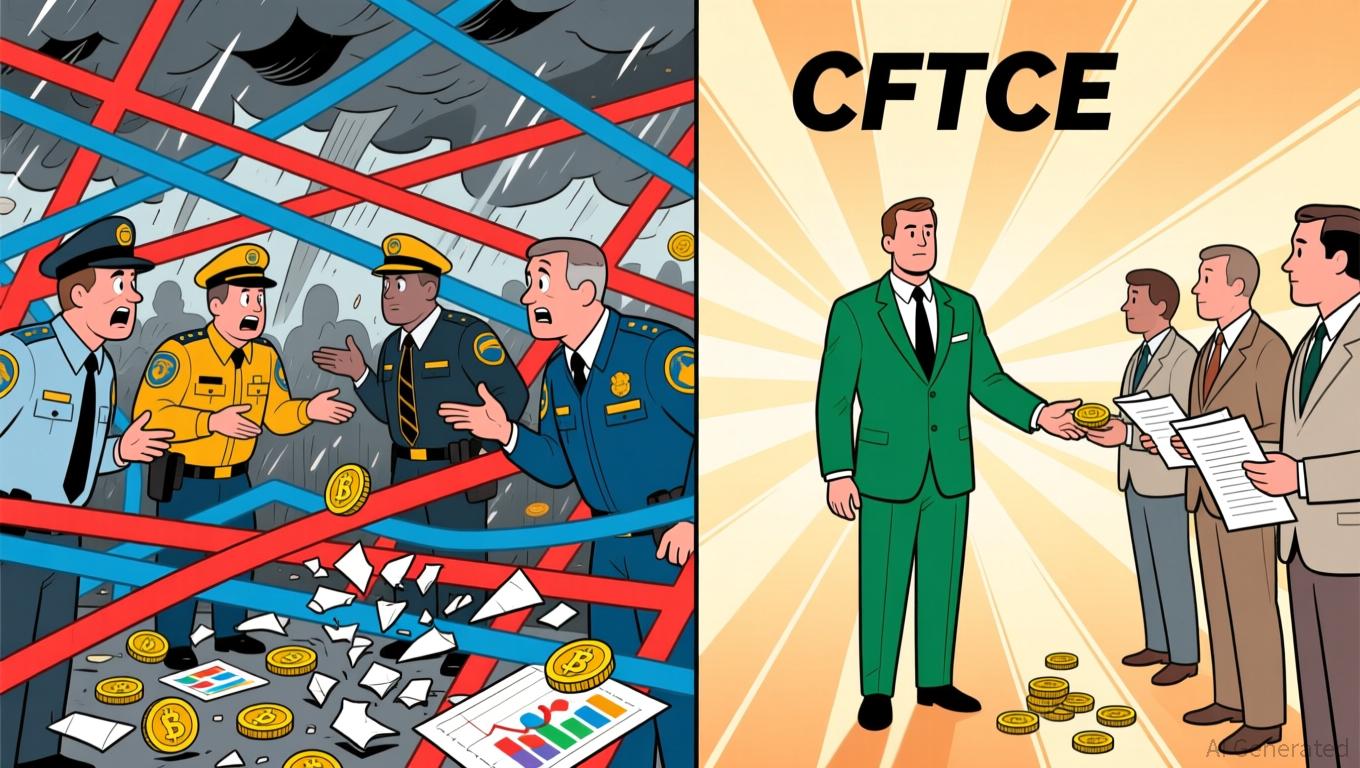Bitcoin’s Latest Price Swings and Broader Economic Influences: Market Sentiment and Central Bank Policy Indicators
- Bitcoin's 2025 volatility stems from central bank policies, investor psychology, and regulatory shifts, with the Fed's balance sheet adjustments and China's gold purchases shaping liquidity dynamics. - Extreme fear metrics (index at 22) and $1.3B liquidations highlight behavioral risks, while institutional actions like Tether's $98M Bitcoin buy signal long-term confidence amid uncertainty. - Pro-crypto policies (e.g., Trump's GENIUS Act) boost adoption, yet regulatory fines (e.g., Coinbase's $25M penalty
Central Bank Policies and Liquidity Dynamics
Central banks continue to play a crucial role in shaping the broader economic landscape that affects Bitcoin’s price swings. The U.S. Federal Reserve, led by New York Fed President John Williams, has indicated a possible shift back to expanding its balance sheet after reducing its securities portfolio from $8.5 trillion to just over $6 trillion through quantitative tightening, as detailed in a
Investor Psychology: Fear, Greed, and Market Sentiment
In 2025, Bitcoin’s price volatility has been closely linked to market sentiment, as tracked by the Crypto Fear & Greed Index. In October 2025, the index dropped sharply to 22, indicating "extreme fear," which coincided with $1.3 billion in liquidations and Bitcoin falling below $104,000, as reported by a
The relationship between sentiment and Bitcoin’s price is further intensified by psychological biases. For example, Tether’s acquisition of 960 Bitcoin for $98 million in November 2025 was seen as a bullish indicator during a period of "extreme fear," signaling institutional faith in Bitcoin’s future, as noted in a
Regulatory Shifts and Institutional Adoption
The pro-crypto approach of the Trump administration has added new factors to Bitcoin’s volatility. Policies such as the Strategic Bitcoin Reserve and the GENIUS Act have brought more regulatory certainty, encouraging greater institutional participation, as outlined in a
Nonetheless, regulatory hurdles remain. The Irish Central Bank’s $25 million penalty against
Macroeconomic Anchors and Future Outlook
Macroeconomic factors like interest rates and trade relations are playing an ever-greater role in Bitcoin’s price fluctuations. The Federal Reserve’s careful, meeting-by-meeting approach to rate reductions as policy nears a neutral stance has added to market uncertainty, according to an
Conclusion
Bitcoin’s price swings in 2025 are the result of a delicate interplay between central bank actions, investor sentiment, and regulatory changes. The Federal Reserve’s liquidity management and global trade policies set the economic stage, while behavioral indicators like the Fear & Greed Index highlight the psychological forces at work. For investors, successfully navigating this environment means understanding both systemic threats and emotional biases. As more institutions enter the market and regulations evolve, Bitcoin’s position as a macroeconomic asset could become clearer, though its volatility will continue to challenge investor resolve and patience.
Disclaimer: The content of this article solely reflects the author's opinion and does not represent the platform in any capacity. This article is not intended to serve as a reference for making investment decisions.
You may also like
Bitcoin News Update: Trump's Pause on China Tariffs Triggers Worker Protests Over Future of U.S. Shipyards
- Trump administration suspends China tariffs on shipbuilding imports, drawing labor union criticism over domestic industry risks and worker refunds. - 175 H-1B visa abuse investigations reveal $15M+ potential refunds, as unions warn of wage suppression and corporate favoritism in trade policies. - Square enables Bitcoin payments for 4M U.S. merchants, advancing crypto adoption while Trump dismisses inflation concerns and vows meatpacking crackdowns.

Bipartisan Legislation Assigns Crypto Regulation to CFTC to Clarify Oversight Uncertainty
- U.S. lawmakers propose shifting crypto regulation from SEC to CFTC via a bipartisan bill, reclassifying most digital assets as commodities. - The draft aims to resolve regulatory ambiguity stifling innovation, building on stalled House CLARITY Act efforts during the 38-day government shutdown. - Market optimism surged as shutdown relief pushed Bitcoin above $105k, with ETF outflows persisting amid anticipation of clearer CFTC-led oversight. - Critics warn of CFTC resource constraints, while proponents hi

Solana News Update: DevvStream Invests in SOL Despite $11.8M Deficit, Shows Strong Confidence in Sustainable Blockchain Prospects
- DevvStream Corp. (DEVS) disclosed holding 12,185 SOL and 22.229 BTC, staking SOL for 6.29% annualized yield amid a $11.8M fiscal 2025 loss. - The company launched a digital asset treasury via BitGo/FRNT Financial, securing $10M liquidity from a $300M convertible note facility. - Plans include a 2026 tokenization platform for carbon credits and Solana staking, aligning with its de-SPAC/Nasdaq listing strategy. - Despite crypto market outflows, DevvStream's staked SOL attracted inflows, contrasting broader
ALGO Falls by 2.28% Over 24 Hours as Short- and Long-Term Performance Shows Mixed Results
- ALGO dropped 2.28% in 24 hours to $0.1844, contrasting with 17.29% weekly and 4% monthly gains but a 44.84% annual decline. - Traders monitor ALGO's resilience amid macroeconomic shifts, though long-term bearish trends highlight structural challenges. - Key support at $0.18 could trigger bullish momentum if held, while breakdown risks further declines toward $0.15. - A backtest analyzing 15% single-day spikes aims to assess ALGO's potential for sustained gains or pullbacks post-rallies.